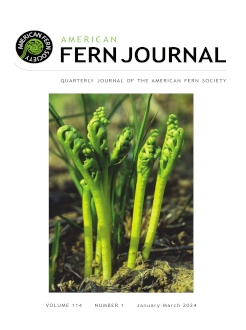This review updates the basic biology of moonwort ferns, genus Botrychium, (Ophioglossaceae). It is intended to provide background to readers of this issue and to alleviate the need for repeating this information by subsequent authors. At present, 38 species of Botrychium have been described, with occurrences worldwide in a diverse range of habitats, most commonly in meadows dominated by herbaceous perennial flowering plants that are the alternative host of the mycorrhizal fungi that support belowground growth of Botrychium. The genus produces small aboveground leaves that produce sporangia. Leaves of individual plants may remain dormant belowground in some years. Individual plants may live for decades. Spores germinate belowground and, following colonization by a mycorrhizal fungus, produce belowground bisexual gametophytes that have a high probability of intragametophytic selfing, commonly resulting in populations with low allelic variability. Because of their small size and reduced morphological complexity, Botrychium species have often been referred to as cryptic species. Though difficult to identify, genetic analysis has shown species distinction to be equal to that of non-cryptic species, and has allowed recognition of morphological characteristic of each taxon.
BioOne.org will be down briefly for maintenance on 17 December 2024 between 18:00-22:00 Pacific Time US. We apologize for any inconvenience.
How to translate text using browser tools
1 March 2024
Botrychium subgenus Botrychium: Moonwort Biology Basics
Donald R. Farrar,
Cindy L. Johnson
ACCESS THE FULL ARTICLE

American Fern Journal
Vol. 114 • No. 1
January-March 2024
Vol. 114 • No. 1
January-March 2024
ecology
gametophyte
morphology
mycorrhizae
Ophioglossaceae
reproduction




